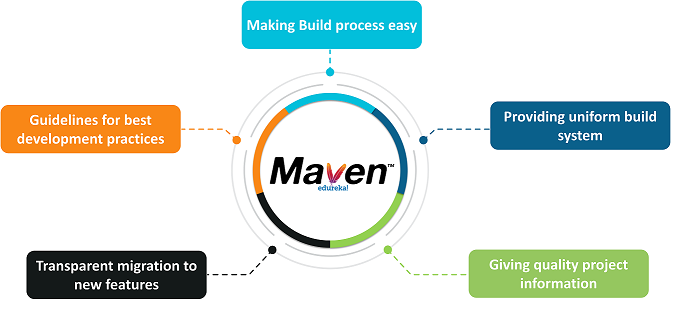What is CMMS?
CMMS (Computerized Maintenance Management System) It is a kind of tool that devoted to facilitate operational monitoring, manage IT infrastructures & deployment, as well as to achieve the best results in organizations. You can schedule preventive maintenance, generate work orders for vendors and manage asset performance using CMMS. This operating efficiency is what enables them to deliver consistent performance, as well as a longer lifespan for their equipment.
The History Of CMMS
Early Development and Evolution
CMMS had its origins in rudimentary punch card systems that were developed in the Sixties. Combining personal computers for this application desirable in the 1980s and was later to lead the development of software suited to more sophisticated needs.
Major Breakthroughs In CMMS Technology
In the course of years, CMMS has integrated various state-of-the-art technologies such as mobile accessibility, cloud computing and business system interfacing. It makes CMMS even more flexible and straightforward to use.
Basic Features of CMMS
Work Order Management
CMMS works with the viable creation, task and following of work orders so upkeep activities can be finished on time.
Preventive Maintenance
Automate your maintenance schedule and reduce downtime or costly repairs. CMMS sends alerts and reminders of approaching maintenance tasks so you never miss a beat.
Asset Management
Keep tabs on all your assets, complete with location, condition and maintenance history. This will help you to make decisions about repairs or replacements based on better information.
Inventory Management
Base your stock-management decisions on real-time information about what is needed, when and where. CMMS facilitates management of order levels, ordering parts and monitoring usage patterns.
Reporting And Analysis
Generate detailed reports, and analyze the data to see where your company is headed in terms of maintenance. This will help you to identify trends, make predictions and generally raise efficiency levels.
Advantages of Using CMMS
Increased Efficiency
By automating and streamlining maintenance processes, CMMS reduces manpower and minimizes the risk of human error, thus increasing efficiency.
Cutting costs
By regular maintenance and good inventory management, a lot of money can be saved. If breakdowns are avoided, the result is a saving of time and money for both Manager and owner.
Bridging gaps in regulations One benefit of using CMMS is that it shortens compliance shortfalls by keeping records on everything preformed during a maintenance operation. The Trails, thus provide an automatic audit trail.
Improved decision-making
The better information managers have at their disposal, from comprehensive data to analytics, helps them to form informed opinions and makes decision-making for maintenance strategies or equipment distribution.
Who’s using CMMS
Manufacturing
Factory equipment can have different needs at different times; CMMS systems help keep it running smoothly and minimize downtime.
Healthcare
Medical facilities such as hospitals and clinics use CMMS for engineering/ medical equipment management that meets patient safety standards set down in regulations.
Buildings Management
From office buildings right through to the community service district as a whole, CMMS is used in infrastructure maintenance and safety management.
Oil & Gas- Chapter Five
CMMS systems are used by the Oil and Gas industry to maintain critical equipment and infrastructure – a means of ensuring efficiency that is both safe for people.
Forward momentum in transportation
CMMS allows fleet managers to maintain their vehicles and equipment, reducing the amount of time lost in breakdowns and enhancing customer service reliability.
Implementing CMMS in Your Organization
Steps to Successful Implementation
- Assessment: Evaluate your current maintenance processes and identify areas for improvement.
- Selection: Choose a CMMS that fits your organization’s needs.
- Planning: Develop a detailed implementation plan, including timelines and resource allocation.
- Training: Provide comprehensive training to all users.
- Go Live: Send off the CMMS and screen its exhibition, making changes as required.
Common Challenges and How to Overcome Them
- Resistance to Change: Get partners required all along, and make sense of the benefits of CMMS.
- Data Migration: Make sure that data is successfully transferred from old systems.
- User Adoption: Provide continued help and education to make users comfortable.
Choosing the Right CMMS
Key Factors to Consider
- Functionality: Does it have all the features you need?
- Ease of Use: Is the interface user-friendly?
- Scalability: Can it grow with your organization?
- Support: What kind of customer support is available?
Comparing Different CMMS Options
Research and compare various CMMS solutions, considering factors such as cost, features, user reviews, and vendor reputation.
Future Trends in CMMS
Integration with IoT
CMMS information can likewise be utilized to enhance IoT information to give more strong insights.Applying IoT permits the CMMS to get continuous information which will move the upkeep from responsive to proactive across the association.
Predictive Maintenance
This includes the capacity to anticipate unscheduled free times with information investigation and different measures to forestall breakdowns before they happen.
AI and Machine Learning Applications
Computer based intelligence and AI can break down tremendous measures of information to enhance upkeep plans and further develop navigation.
Case Studies
Success Stories of Companies Using CMMS
- XYZ Manufacturing: Improved equipment uptime by 20% using CMMS.
- ABC Healthcare: Achieved regulatory compliance with automated maintenance records.
Lessons Learned from CMMS Implementations
Fruitful executions feature the significance of appropriate preparation, preparing, and client commitment.
Common misconceptions about CMMS
CMMS is only for large organizations
While immense affiliations have benefitted from using CMMS, little and medium-sized associations also value basic redesigns in efficiency and cost save reserves.
CMMS is too expensive
There are affordable CMMS solutions on the market which offer very good value for money.
CMMS is complicated to use
The present current CMMS arrangements are intended to be easy to understand, with a natural connection point and far reaching support.
CMMS vs. EAM (Enterprise Asset Management)
Differences and similarities
CMMS centers around keeping up with resources, while EAM covers the entire lifecycle of the executives – securing to removal.
When to use CMMS vs. EAM
Choose CMMS where maintenance alone is the focus and EAM as a comprehensive asset management system.
Training and support for CMMS
Importance of proper training
Proper training ensures that users can fully utilize all the features of CMMS, resulting in better outcomes for all concerned.
Types of Support Available
There are a variety of support options to choose from when you decide to install a CMMS. Most manufacturers will provide online resources, help desks, and on-site training as part of their package.
Customizing CMMS for Your Needs
Customizable Features
Due to the vast range of industrial enterprises today, most CMMS systems include customizable features tailored to the specific needs and processes of a particular industry.
How to Tailor CMMS to Specific Industries
Properly customized, the software must be able to meet any industry’s most stringent standards. Work with your CMMS vendor on this.
Measuring the ROI of CMMS
Key Performance Indicators (KPIs)
Upkeep administrators track abundant Key Execution Pointers ( KPIs) like hardware uptime; support expenses and work request finish times. In this way they can gauge the effectiveness of their CMMS operations.
Ways of Calculating ROI
Compare the cost savings and efficiency gains achieved through implementation of CMMS to Societal Norms Against your initial investment more than p an fifty post install year One of the simplest, most direct ways to start envisioning this process–literally.
Conclusion
In today’s fast-moving and technology-driven world, organizations need CMMS to manage their maintenance tasks. From improved effectiveness and reduced costs to remaining in compliance and still there when it counts, CMMS offers many benefits. By selecting the right CMMS and implementing it effectively, various businesses can achieve significant improvements in their own maintenance processes.










